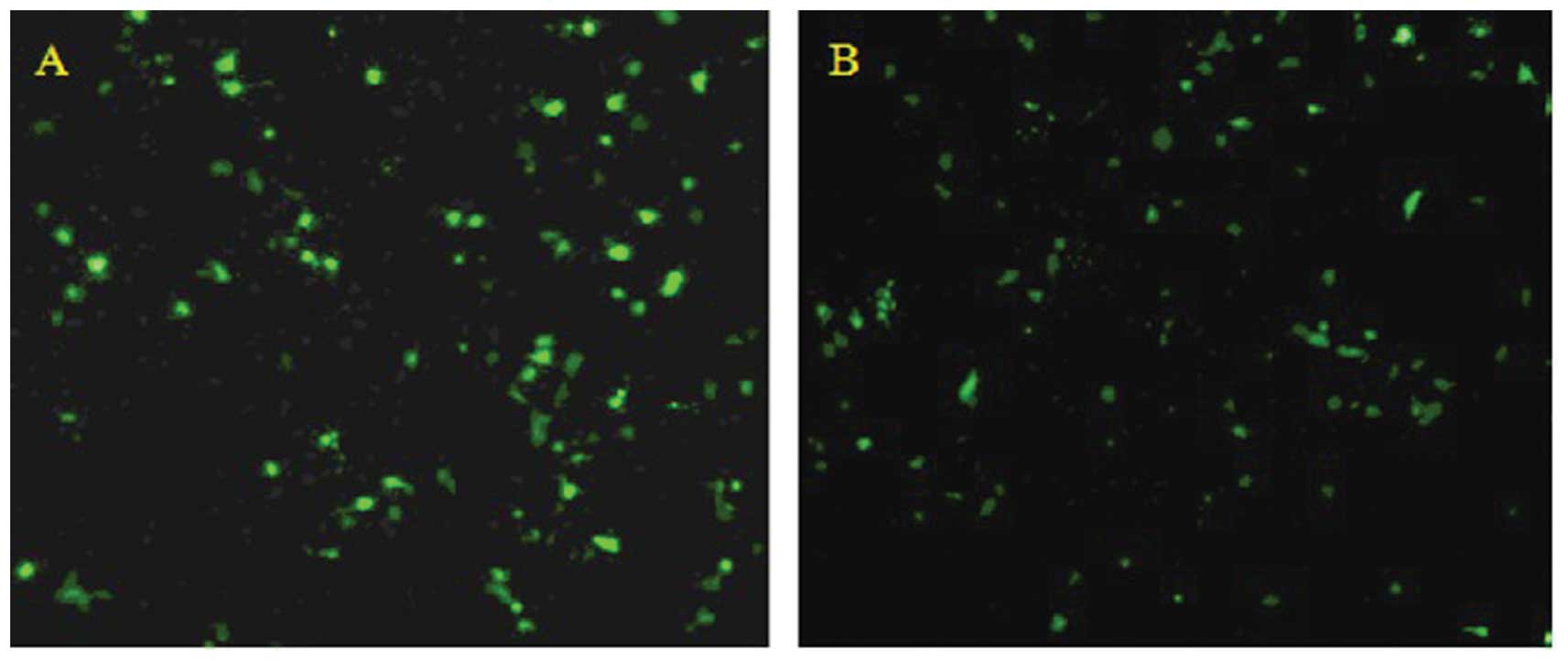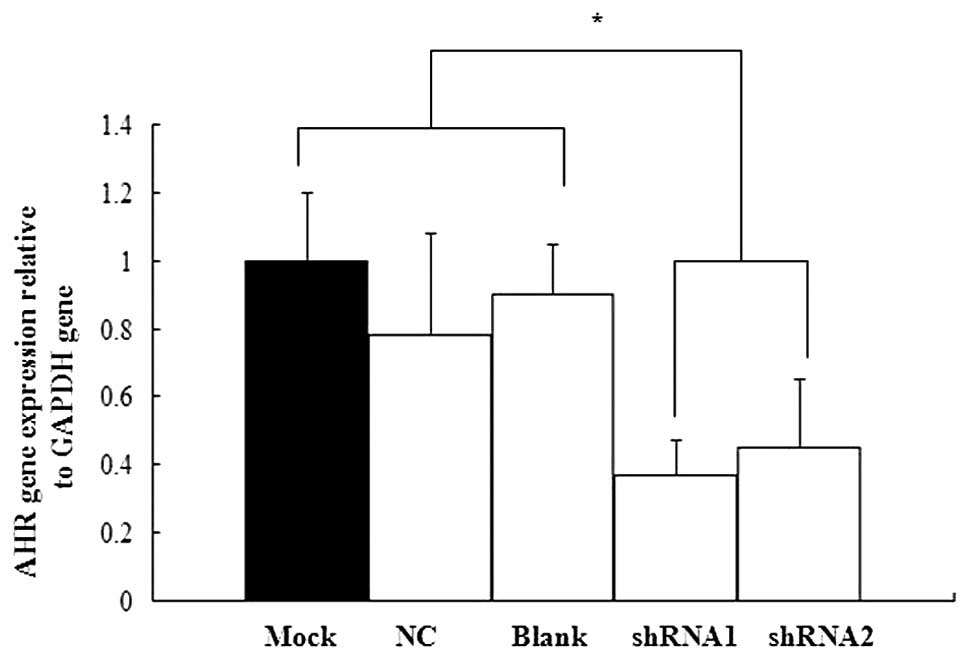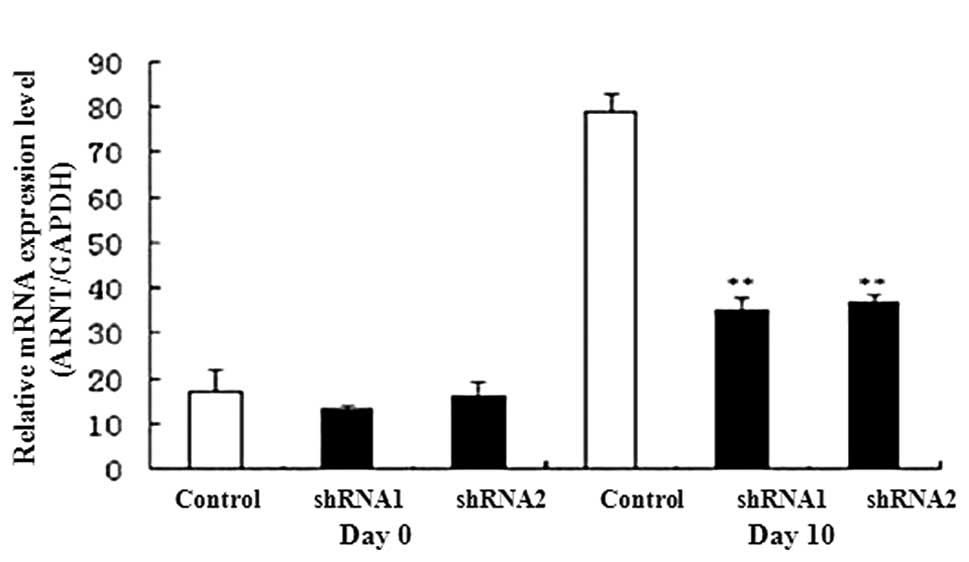|
1
|
Olson EN: Gene regulatory networks in the
evolution and development of the heart. Science. 313:1922–1927.
2006. View Article : Google Scholar : PubMed/NCBI
|
|
2
|
Hsiao SM, Wu MH, Jou HJ, Lee CN, Shyu MK,
Shih JC and Hsieh FJ: Outcome for fetuses with prenatally detected
congenital heart disease and cardiac arrhythmias in Taiwan. J
Formos Med Assoc. 106:423–431. 2007. View Article : Google Scholar : PubMed/NCBI
|
|
3
|
Hennig B, Meerarani P, Slim R, Toborek M,
Daugherty A, Silverstone AE and Robertson LW: Proinflammatory
properties of coplanar PCBs: in vitro and in vivo evidence. Toxicol
Appl Pharmacol. 181:174–183. 2002. View Article : Google Scholar : PubMed/NCBI
|
|
4
|
Pelclová D, Urban P, Preiss J, Lukás E,
Fenclová Z, Navrátil T, Dubská Z and Senholdová Z: Adverse health
effects in humans exposed to 2, 3, 7,
8-tetrachlorodibenzo-p-dioxin (TCDD). Rev Environ Health.
21:119–138. 2006.
|
|
5
|
DeWitt JC, Millsap DS, Yeager RL, Heise
SS, Sparks DW and Henshel DS: External heart deformities in
passerine birds exposed to environmental mixtures of
polychlorinated biphenyls during development. Environ Toxicol Chem.
25:541–551. 2006. View Article : Google Scholar : PubMed/NCBI
|
|
6
|
Majkova Z, Smart E, Toborek M and Hennig
B: Up-regulation of endothelial monocyte chemoattractant protein-1
by coplanar PCB77 is caveolin-1-dependent. Toxicol Appl Pharmacol.
237:1–7. 2009. View Article : Google Scholar : PubMed/NCBI
|
|
7
|
Hong Y, Chunhong Z and Xiaoxiong Z:
Investigation of pollution characteristics of polychlorinated
biphenyls in the typical drinking water sources in Jiangsu
Province, China. Environ Monit Assess. 158:573–579. 2009.
|
|
8
|
Shen H, Shen H, Han J, Tie X, Xu W, Ren Y
and Ye C: Polychlorinated dibenzo-p-dioxins/furans and
polychlorinated biphenyls in human adipose tissue from Zhejiang
Province, China. Chemosphere. 74:384–388. 2009.
|
|
9
|
Suzuki G, Nakano M and Nakano S:
Distribution of PCDDs/PCDFs and co-PCBs in human maternal blood,
cord blood, placenta, milk, and adipose tissue: dioxins showing
high toxic equivalency factor accumulate in the placenta. Biosci
Biotechnol Biochem. 69:1836–1847. 2005. View Article : Google Scholar
|
|
10
|
Shen H, Shen H, Main KM, Virtanen HE,
Damggard IN, Haavisto AM, Kaleva M, Boisen KA, Schmidt IM,
Chellakooty M, Skakkebaek NE, Toppari J and Schramm KW: From mother
to child: investigation of prenatal and postnatal exposure to
persistent bioaccumulating toxicants using breast milk and placenta
biomonitoring. Chemosphere. 67:S256–S262. 2007. View Article : Google Scholar : PubMed/NCBI
|
|
11
|
Liu S and Piatigorsky J: Regulation of
mouse small heat shock protein αb-crystallin gene by aryl
hydrocarbon receptor. PLoS One. 6:e179042011.
|
|
12
|
Shimada T, Sugie A, Shindo M, Nakajima T,
Azuma E, Hashimoto M and Inoue K: Tissue-specific induction of
cytochromes P450 1A1 and 1B1 by polycyclic aromatic hydrocarbons
and polychlorinated biphenyls in engineered C57BL/6J mice of
arylhydrocarbon receptor gene. Toxicol Appl Pharmacol. 187:1–10.
2003. View Article : Google Scholar : PubMed/NCBI
|
|
13
|
Manoharan M: RNA interference and
chemically modified small interfering RNAs. Curr Opin Chem Biol.
8:570–579. 2004. View Article : Google Scholar : PubMed/NCBI
|
|
14
|
Han SG, Eum SY, Toborek M, Smart E and
Hennig B: Polychlorinated biphenyl-induced VCAM-1 expression is
attenuated in aortic endothelial cells isolated from caveolin-1
deficient mice. Toxicol Appl Pharmacol. 246:74–82. 2010. View Article : Google Scholar : PubMed/NCBI
|
|
15
|
Hennig B, Reiterer G, Majkova Z,
Oesterling E, Meerarani P and Toborek M: Modification of
environmental toxicity by nutrients: implications in
atherosclerosis. Cardiovasc Toxicol. 5:153–160. 2005. View Article : Google Scholar : PubMed/NCBI
|
|
16
|
Grimes AC, Erwin KN, Stadt HA, Hunter GL,
Gefroh HA, Tsai HJ and Kirby ML: PCB126 exposure disrupts zebrafish
ventricular and branchial but not early neural crest development.
Toxicol Sci. 106:193–205. 2008. View Article : Google Scholar : PubMed/NCBI
|
|
17
|
Lund AK, Peterson SL, Timmins GS and
Walker MK: Endothelin-1-mediated increase in reactive oxygen
species and NADPH oxidase activity in hearts of aryl hydrocarbon
receptor (AhR) null mice. Toxicol Sci. 88:265–273. 2005. View Article : Google Scholar : PubMed/NCBI
|
|
18
|
Shevtsov SP, Haq S and Force T: Activation
of beta-catenin signaling pathways by classical G-protein-coupled
receptors: mechanisms and consequences in cycling and non-cycling
cells. Cell Cycle. 5:2295–2300. 2006. View Article : Google Scholar : PubMed/NCBI
|
|
19
|
Nakamura T, Sano M, Songyang Z and
Schneider MD: A Wnt- and beta-catenin-dependent pathway for
mammalian cardiac myogenesis. Proc Natl Acad Sci USA.
100:5834–5839. 2003. View Article : Google Scholar : PubMed/NCBI
|
|
20
|
Kwon C, Arnold J, Hsiao EC, Taketo MM,
Conklin BR and Srivastava D: Canonical Wnt signaling is a positive
regulator of mammalian cardiac progenitors. Proc Natl Acad Sci USA.
104:10894–10899. 2007. View Article : Google Scholar : PubMed/NCBI
|
|
21
|
Ai D, Fu X, Wang J, Lu MF, Chen L, Baldini
A, Klein WH and Martin JF: Canonical Wnt signaling functions in
second heart field to promote right ventricular growth. Proc Natl
Acad Sci USA. 104:9319–9324. 2007. View Article : Google Scholar : PubMed/NCBI
|
|
22
|
Mathew LK, Sengupta SS, Ladu J, Andreasen
EA and Tanguay RL: Crosstalk between AHR and Wnt signaling through
R-Spondin1 impairs tissue regeneration in zebrafish. FASEB J.
22:3087–3096. 2008. View Article : Google Scholar : PubMed/NCBI
|















